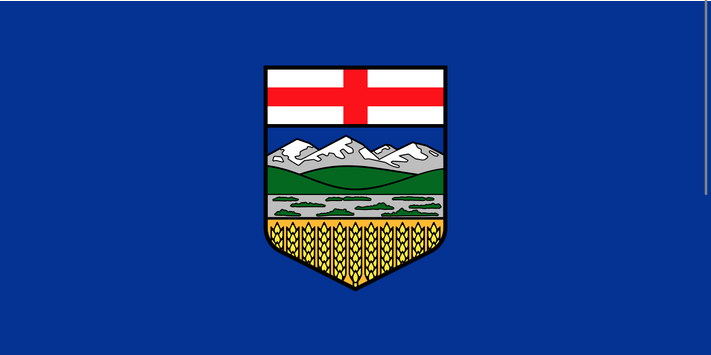Alberta won the energy lottery millions of years ago. I’m not talking scratchers, but the Powerball. You know, the big American lottery that every so often is over a billion dollars?
Except Alberta’s winnings are much, much larger than that.
So why is it the weekend of Jan. 12-15, the jurisdiction that has more oil, gas and coal than God, because God gave all his to Alberta, was forced to beg its neighbours if they could spare a megawatt?
Because that’s what happened. It got so desperate the night of Saturday, Jan. 13, that the neighbours did not have another megawatt to spare. The Alberta Electric System Operator (AESO) and the government of Alberta sent out an emergency alert to every cellphone and TV screen in the province, calling on people to shut off everything from stoves to bathroom fans, as well as unplug block heaters and electric vehicles.
The only way this could happen is complete and utter incompetence at the top. It started with Rachel Notley, but Jason Kenney didn’t seem to do much to reverse her moves. Only Danielle Smith seems to have finally said, “No more!”
Former Alberta premier Rachel Notley’s push to get rid of coal as soon as possible and build as much wind and solar is a prime example of incompetence. While most coal plants converted to natural gas, not all units did, and hundreds of megawatts of cheap, reliable power were lost. Meanwhile, in the last two years Alberta’s wind and solar basically doubled, projects that mostly got their start under Notley. And yet there were moments during the weekend where both wind and solar hit zero output, sometimes at same time. Wind and solar’s theoretical capacity of 6,131 megawatts was a big fat zero.
And yet when Notley announced her departure as leader of the NDP on Jan. 16, she put out a video proclaiming the elimination of coal-fired power and kickstarting renewables among her greatest accomplishments.
Some people blamed a small handful of natural gas plants being out of operation. Which is a greater concern – two of 87 gas fired units being down, or 88 of 88 wind and solar farms being down at the same time, as happened the morning of Jan. 14? Indeed, the vast majority of the 87 gas units and 2 coal units were indeed providing nearly all of Alberta’s power throughout the weekend.
Those four days saw the AESO issue four “grid alerts” in a row. The second one was a much closer-run thing. As a last resort, they put all the grid-scale batteries into play, and those batteries were running out of juice after just an hour. The contingency reserve went to effectively zero.
If the province had not issued its emergency alert, the AESO since reported they were within a half hour of calling for rotating blackouts.
Thankfully, it did work. But what about next time?
The next step was rotating blackouts, and, if that didn’t work, major load shedding. And if that wasn’t enough, a replay of Texas, February, 2021, when 246 died. Except there would be more bodies, because it’s a hell of a lot colder here.
Lessons
There are some lessons from that weekend, and especially Saturday:
- Wind and solar totally and utterly fail when we need power the most.
- Do NOT expect your neighbour to be able to help you out. Often they can, and do. But as we saw Jan. 13, when your boat is sinking, your neighbour’s may be sinking faster. This was evident by the small amount of power BC sent Alberta. They routinely send 3x that. Montana was sending effectively nothing. And even though Saskatchewan was maxed out in sending what we had, it was not enough to bail out Alberta. Interties are good in many ways, but they must not be entirely relied upon.
- As a result, each jurisdiction must ensure it has ample supply within its own borders and control. And that includes enough dispatchable power to backfill every single megawatt of wind and solar, plus the possible loss of one of its baseload units. That 4 per cent contingency reserve is really not enough.
- If Alberta did go into rotating blackouts:
- What would have happened if that half hour turned out into half a day, or longer, with the temperature at -35 C as it was in Calgary? How many lives might be on the line? What would the property loss be, from things like frozen pipes?
- Whose head would the public be calling for on Monday morning? Oh wait, there was a fourth grid alert that morning.
- Alberta has more than five million vehicles registered. What would have happened if five million EVs were all plugged in that weekend?
- We cannot, we must not, allow this to happen here in Saskatchewan, or again in Alberta. But yet SaskPower keeps saying we’re going to build an additional 3,000 megawatts of wind and solar. We are on Alberta’s path. Alberta already has 6,131 megawatts of wind and solar. How’s that working out for them? Friday night – 6 megawatts. Saturday night – 90. Sunday morning, zero.
Fossil fuels account for up to 94 per cent of Alberta’s and 89 per cent of Saskatchewan’s power on any given day. We cannot, must not, allow ourselves to think any amount of wind and solar can keep us alive when the temperatures hit -35 C. That weekend in Alberta proved it.
Brian Zinchuk is editor an owner of Pipeline Online and occasional contributor to the Frontier Centre for Public Policy. He can be reached at brian.zinchuk@pipelineonline.ca.



